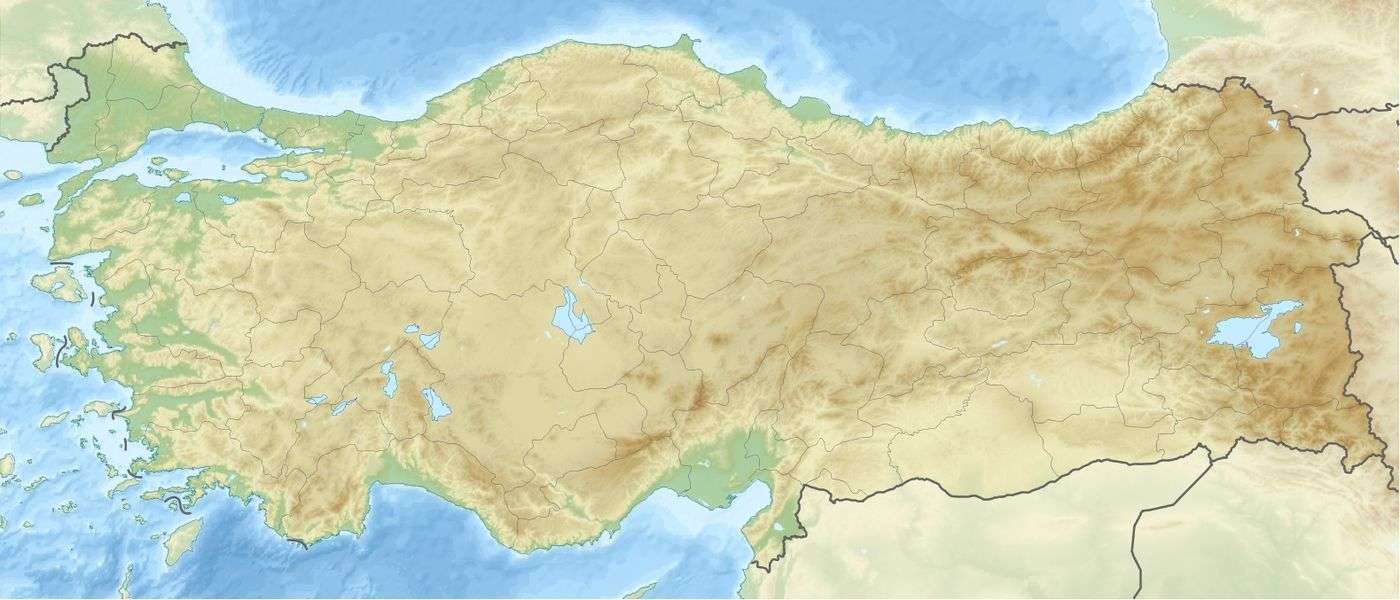Nerik
 Nerik Location of Nerik in Turkey | |
| Alternate name | Narak |
|---|---|
| Location | Oymaağaç, Vezirköprü, Samsun Province, Turkey |
| Region | Black Sea Region |
| Coordinates | 41°12′25″N 35°25′12″E / 41.207°N 35.420°ECoordinates: 41°12′25″N 35°25′12″E / 41.207°N 35.420°E |
| History | |
| Abandoned | 1200 BC |
| Periods | Hittites |
| Site notes | |
| Excavation dates | 2005– |
| Archaeologists | Rainer Maria Czichon |
Nerik (Hittite: Nerikka[1]) was a Bronze Age settlement to the north of the Hittite capitals Hattusa and Sapinuwa, probably in the Pontic region.[2] The Hittites held it as sacred to a storm god, who was the son of Wurušemu, sun goddess of Arinna. The weather god is associated or identified with Mount Zaliyanu near Nerik, responsible for assigning rain to the city.
Nerik was founded by Hattic language speakers as Narak;[3] in the Hattusa archive, tablet CTH 737 records a Hattic incantation for a festival there. Under Hattusili I, the Nesian-speaking Hittites took over Nerik. They maintained a spring festival called "Puruli" in honor of its storm god. In it, the celebrants recited the myth of the slaying of Illuyanka.
Under Hantili, Nerik was ruined and the Hittites had to relocate the Puruli festival to Hattusa. As of the reign of Tudhaliya I, Nerik's site was occupied by the barbarian Kaskas, whom the Hittites blamed for its initial destruction.[4]
During Muwatalli II's reign, his brother and appointed governor Hattusili III recaptured Nerik and rebuilt it as its High Priest. Hattusili named his firstborn son "Nerikkaili" in commemoration (although he later passed him over for the succession). When Muwatalli's son Mursili III became king, after seven years Mursili reassigned Nerik to another governor. Hattusili rebelled and became king himself.
Nerik disappeared from the historical record when the Hittite kingdom fell, ca. 1200 BC.
Excavations
In 2005, Rainer Maria Czichon and Jörg Klinger of the Free University of Berlin began excavation of Oymaağaç Höyük, on the eastern side of the Kızılırmak River, 7 km (4.3 mi) northwest of Vezirköprü.. Thus far this is the northernmost place of Anatolia with Hittite Imperial remains – including "three fragments of tablets and a bulla with stamps of the scribe Sarini. In addition, mention of the mountains, in which Nerik was located, have been found at the site, as well as features suggestive of monumental Hittite architecture.[5] No secure identification has yet been published, but the name of their website (www.nerik.de) shows their confidence.
According to Czichon, who is currently a faculty for archaeology at Uşak University, lots of stone and loom artifacts were unearthed. Mining tools were found for copper deposits situated at nearby Tavşan Mountain field. The most valuable artifacts are tablets with cuneiform script, which point out the site as Nerik. An inventory list showing tools, including silver trays and golden bullae contained in an unknown shrine, is also among the findings.[6]
References
- ↑ "Nerik(ka)." Reallexikon der Assyriologie.
- ↑ Bryce, Trevor (2005). Kingdom of the Hittites: New Edition. Oxford University Press. p. 113. ISBN 0199281327.
- ↑ "Nerik(ka)." Reallexikon der Assyriologie.
- ↑ Singer, Itamar (2007). "Who were the Kaška?". Phasis. Ivane Javakhishvili Tblisi State University. 10 (II): 167. Retrieved 15 July 2015.
- ↑ "Oymaagac-Nerik Project". Freie Universität Berlin. Retrieved July 15, 2015.
- ↑ "Religious center of Hittites comes to light". Hürriyet Daily News (in Turkish). 2016-08-13. Retrieved 2016-08-13.
External links
- Prayer for Nerik
- Apology of Hattusili III
- Archaeological research in connection with Nerik
- Oymaağaç Höyük (Samsun)